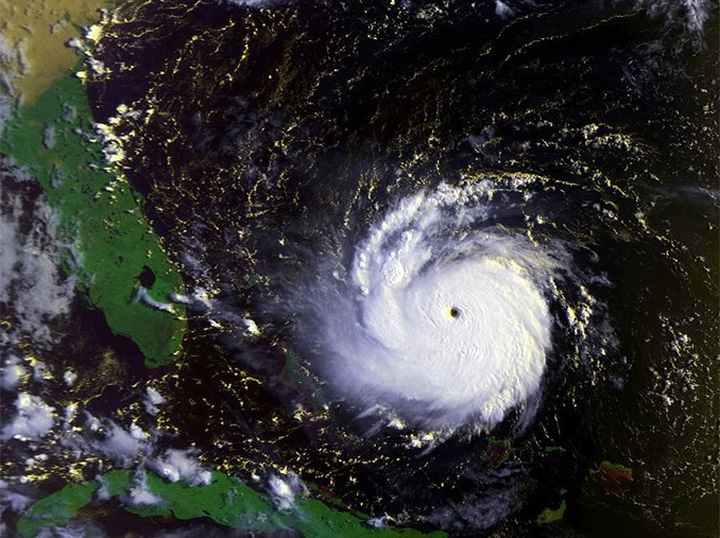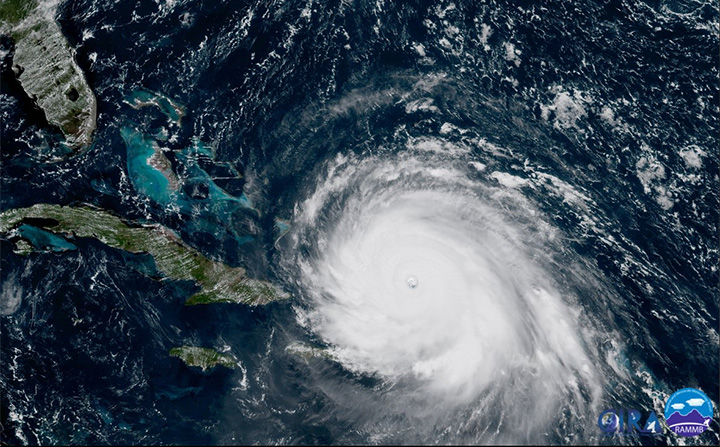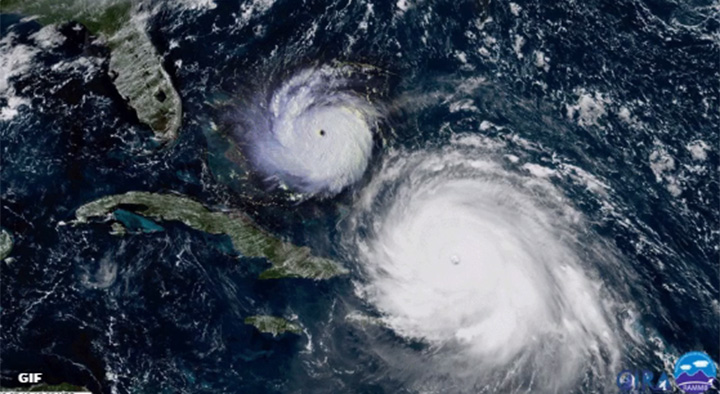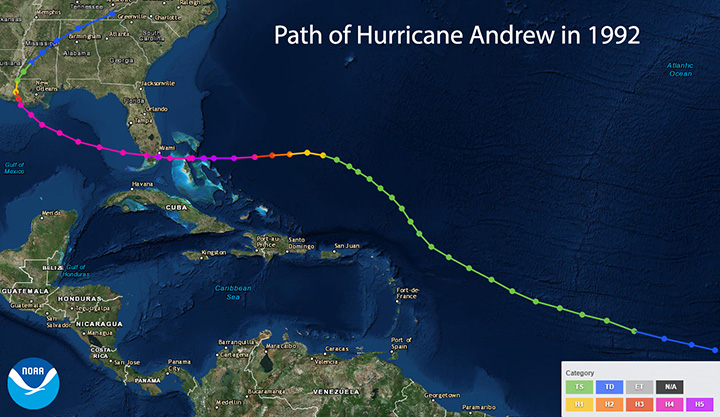Monster storm Hurricane Irma continues on its path towards Florida and is expected to make landfall by Sunday with potentially catastrophic results, prompting warnings from officials the storm could be worse than Hurricane Andrew.

Hurricane Irma weakened to a Category 4 storm early Friday packing winds speeds of about 240 km/h, remaining a very powerful and dangerous storm.
LIVE UPDATES: Tracking Hurricane Irma’s path
On Thursday, Florida officials began ordering evacuations from southern cities while Irma was a Category 5 storm and prompted a strong warning from state governor Rick Scott.

“Look at the size of this storm, it’s huge,” Scott said. “It’s wider than our entire state and could cause major and life-threatening impacts coast to coast. Remember Hurricane Andrew is one of the worst storms in the history of Florida. This is much worse and more devastating on its current path.”
Late Thursday, meteorologist Eric Holthaus shared side-by-side photo comparisons of Hurricane Andrew, that last Category 5 storm to hit Florida, and Hurricane Irma, currently barrelling towards the state.
Holthaus’ photos were then made into a GIF by fellow Twitter user Joel Nihlean, using satellite data to show the two storms in scale, the meteorologist noted in a blog.
In 1992, Hurricane Andrew initially made Florida landfall as a Category 4 storm in the early hours of Aug. 24. Andrew was later upgraded to a Category 5, according to the National Oceanic and Atmospheric Administration (NOAA).
Hurricane Andrew destroyed 125,000 homes and killed over 60 people by the time it dissipated. It was the third Category 5 storm to hit the U.S. mainland, following in the footsteps of Hurricane Camille in 1969 and the Labour Day Hurricane of 1935.
Hurricane Irma: These photos reveal the destruction left in monster storm’s wake

Get breaking National news
That storm caused nearly $50 billion in damage in current-day dollars, according to NOAA.
Andrew’s winds left a swath of destruction about 50 kilometres wide. Hurricane Irma could unleash its winds on an area three times that wide.
Speaking with the Associated Press, Jeff Masters, meteorology director at Weather Underground, noted that Irma will pass over “a much bigger population,” compared to Andrew.
“Andrew missed like four-fifths of the Miami-Dade population centres,” Masters told the news agency.
About 1.9 million people lived in Miami-Dade County when Andrew hit. Now about six million people live in south Florida’s three counties and another four million people live in threatened Orlando and Jacksonville.

After Andrew, Florida mandated the most stringent building codes in the U.S. Since 2001, structures statewide must be built to withstand winds of 178 km/h and stronger.
The Miami area has higher requirements. Broward and Miami-Dade counties are “high velocity hurricane zones” where structures must withstand hurricane winds of at least 209 km/h and critical infrastructure buildings must withstand winds of 251 km/h and stronger.
“This is a massive storm,” Scott said. “This storm is bigger, faster and stronger than Hurricane Andrew.”
–with a file from the Associated Press.























Comments